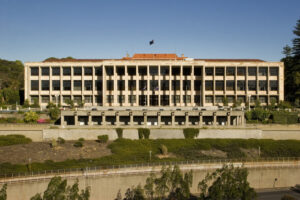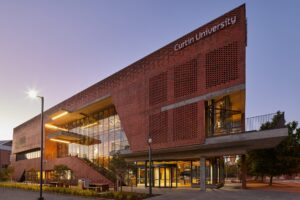
The New South Wales government, led by Premier Chris Minns, has announced a significant development plan for Woollahra, including the construction of a new heavy rail train station. This plan, which also involves rezoning land for high-rise apartment developments, aims to create 10,000 new homes in Sydney’s eastern suburbs. Despite acknowledging that the proposal may not be met with “universal happiness,” Minns asserts that the initiative “can’t be stopped.”
On Sunday, Minns detailed the government’s strategy to rezone areas within 800 metres of the planned Woollahra station and 400 metres of Edgecliff. The new apartments are expected to be developed over the next 10 to 15 years. This station, initially constructed in the 1970s but never opened due to local opposition, is positioned close to Sydney’s central business district and essential infrastructure such as St Vincent’s Hospital.
“The truth of the matter is, to combat Sydney’s housing crisis, everybody’s going to have to do their bit,” Minns stated. He emphasized the need to distribute housing growth more evenly across the region, rather than focusing primarily on the rapidly expanding western suburbs.
The Premier revealed that the maximum height of buildings permitted under the new zoning regulations would be comparable to an existing 21-storey development in Woollahra. However, he noted that most developments would likely be shorter. The exact number of towers needed to accommodate the projected 10,000 homes remains uncertain, as this will depend on input from property developers and builders during the master planning process.
This announcement marks a notable shift in the government’s approach to urban development in the area. Less than two years ago, the government opted not to include Edgecliff in a major rezoning effort due to concerns about “limited sewer and water infrastructure,” as articulated by Planning Minister Paul Scully. At that time, the Eastern Suburbs train line was described as operating at “high capacity.” However, Minns indicated that recent advice from Sydney Water suggests there is now “ample evidence and space for extra development.”
While the government has been optimistic about its housing plans, local opposition remains. Kellie Sloane, the opposition health spokeswoman and Vaucluse MP, has expressed skepticism about the infrastructure’s capacity to support such a significant influx of new residents. Sloane contended, “The local school is already at capacity, the roads are choked, half of the people here already live in flats and apartments.”
Concerns have also been raised regarding the feasibility of delivering 10,000 new homes in Woollahra. Sloane suggested that achieving this target would require constructing approximately 95 21-storey towers, which she deemed unrealistic.
In response to these concerns, the government has introduced a value capture mechanism for new apartments in the rezoned areas, which will require developers to contribute between $12,500 and $15,000 per unit. This initiative is expected to generate a return on the estimated $150 million to $200 million investment needed to build the new station. Minns described this as a “fair return” for taxpayers, linking it to increased housing opportunities in the region.
As the Labor government moves forward with this ambitious plan, the political landscape may shift as well. While polls indicate broad support for increasing housing supply, the reality of higher density developments in affluent areas like Woollahra poses challenges. The government’s strategy appears to be a balancing act between addressing housing shortages and managing local sentiments regarding development.
The unfolding situation in Woollahra reflects the complexities of urban planning in Sydney, where the intersection of infrastructure, housing needs, and community concerns will shape the future of the city’s eastern suburbs.







